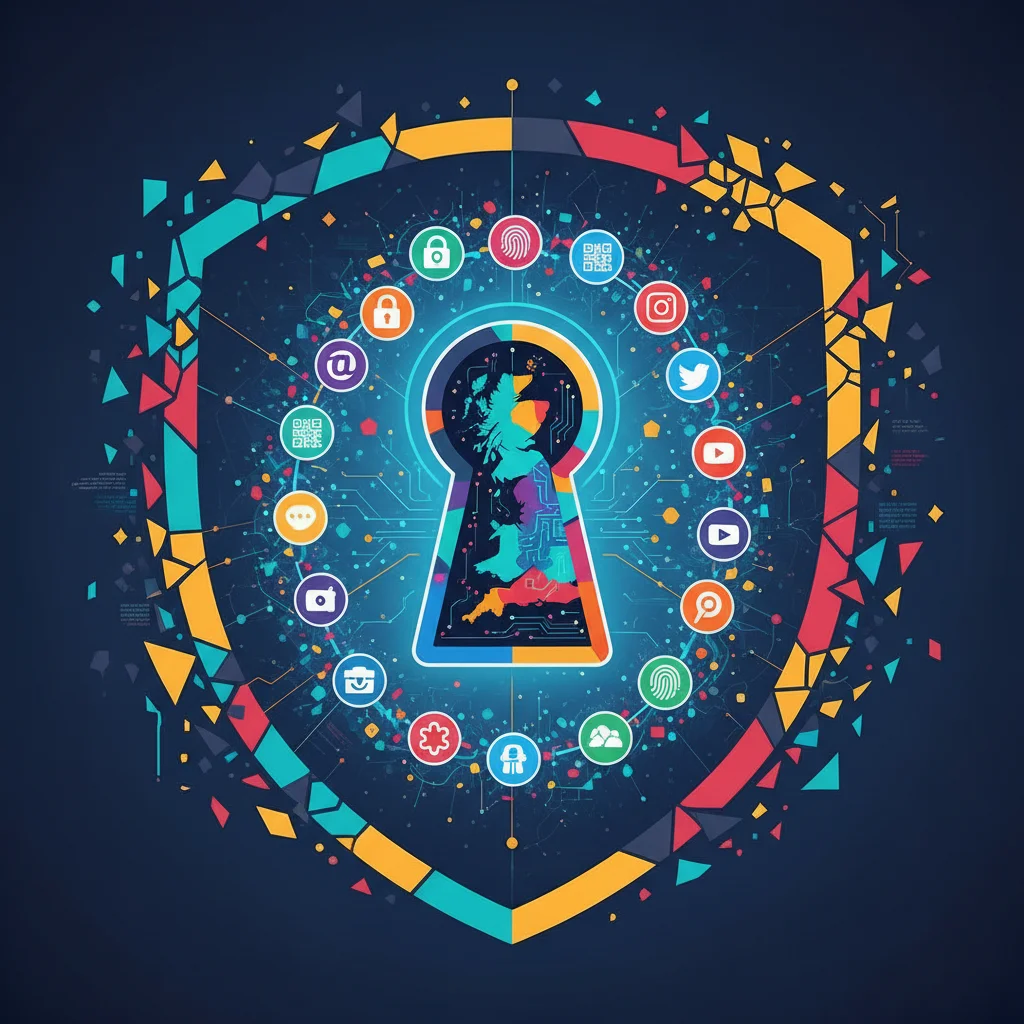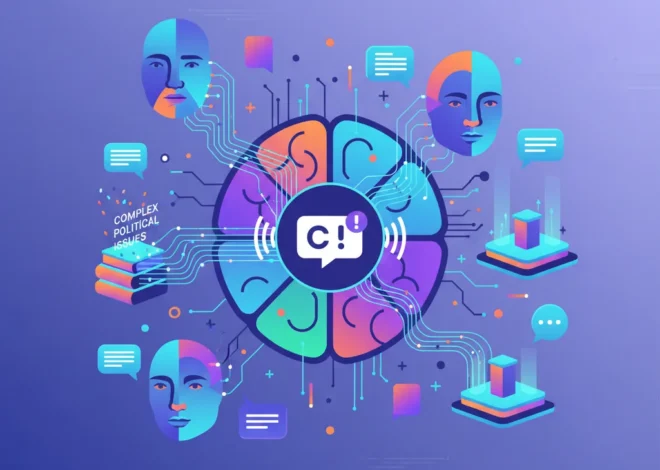
One Login to Rule Them All? The UK’s Digital ID and the Billion-Dollar Cybersecurity Gamble
Remember the digital dark ages? A time of forgotten passwords, endless “I’m not a robot” tests, and a digital keyring cluttered with dozens of unique logins for everything from filing your taxes to checking your bin collection day. The promise of a single, unified digital identity—one key to unlock every government service—sounds like a utopian dream. This is the vision behind the UK government’s ambitious One Login system. But as with any grand vision, the devil is in the details, and a recent BBC report highlights a growing chorus of concern: can we trust this master key with our entire digital lives?
The government is facing tough questions about whether One Login can truly keep our personal data secure. It’s a classic tech dilemma: the monumental convenience of centralization versus the catastrophic risk of a single point of failure. For developers, entrepreneurs, and tech professionals, this isn’t just a piece of government news; it’s a real-world, high-stakes case study in cybersecurity, cloud architecture, and the delicate dance of public trust. Let’s peel back the layers of this ambitious project and explore the technology, the risks, and the immense opportunities it represents.
The Grand Vision: What Exactly is GOV.UK One Login?
At its core, One Login is a Single Sign-On (SSO) and identity verification system designed to be the one and only account citizens need to access all UK government services online. Think “Sign in with Google,” but for your entire civic life—from the NHS and HMRC to the DVLA and the Department for Work and Pensions. The goal is to replace the patchwork of over 100 different login methods currently used across government websites with a single, streamlined, and secure platform.
The project, managed by the Government Digital Service (GDS), is a massive undertaking in software and cloud infrastructure. It aims to provide:
- Identity Verification: Using modern techniques, including document scanning and facial recognition, to prove you are who you say you are.
- Single Sign-On (SSO): One set of credentials to access a universe of services.
- Attribute Sharing: With user consent, securely share verified information (like your address or age) between departments, eliminating repetitive data entry.
The potential benefits are enormous. For citizens, it means less friction and a more coherent user experience. For the government, it represents a huge leap in efficiency, data accuracy, and the potential for service automation. This is GovTech innovation on a national scale, a true Software-as-a-Service (SaaS) model for public administration. The GDS has reported that by early 2024, the system had already been adopted by 46 services and had over 8 million users (source), demonstrating its rapid rollout.
The AI Glitch That Saw a Gun: Why a Teen's Doritos Snack Is a Wake-Up Call for All of Tech
The Cybersecurity Conundrum: A Master Key or a Master Target?
While the vision is compelling, the security implications are staggering. Centralizing the identity data of an entire nation into a single system creates what cybersecurity experts call a “honeypot”—an irresistibly valuable target for malicious actors, from individual hackers to hostile nation-states. The question raised by critics and security professionals isn’t *if* it will be attacked, but *when* and *how well* it will withstand the assault.
The primary concern is the single point of failure. If a vulnerability is found in the One Login software or its underlying cloud infrastructure, a breach could be catastrophic. Instead of compromising a single departmental account, an attacker could potentially gain access to a citizen’s entire digital footprint, including their tax records, health information, driving license details, and more. This is the digital equivalent of a burglar stealing a master key that opens every door in your life.
To understand the architectural trade-offs, let’s compare the centralized model of One Login with the emerging concept of Decentralized Identity (DID).
| Feature | Centralized Identity (e.g., One Login) | Decentralized Identity (DID) |
|---|---|---|
| Data Storage | Data is held by a central authority (the government). | User controls their own identity data in a personal digital wallet. |
| Control | The service provider controls the account and can revoke access. | The individual has sovereign control over their identity. |
| Point of Failure | Single, high-value target. A breach can be systemic. | Distributed. No central server to attack, making large-scale breaches harder. |
| User Experience | Simple and familiar (like social logins). | Can be more complex initially, requires user education on concepts like wallets and keys. |
| Trust Model | Trust is placed in the central provider to secure data. | Trust is based on cryptographic proofs and blockchain technology (trust in the math). |
While DID offers a compelling vision for the future, it is still a nascent technology. The government’s choice of a centralized system is pragmatic, but it places an immense burden on its architects to build an impenetrable fortress. This requires a multi-layered defense strategy, where artificial intelligence and machine learning play a pivotal role.
The AI Arms Race: Defending the Digital Realm
Building and securing a system like One Login is not just a matter of strong passwords and firewalls. It’s an ongoing battle where both defenders and attackers are leveraging cutting-edge technology. The field of AI is at the heart of this conflict.
Defensive AI: The Digital Guardians
The GDS team is undoubtedly using sophisticated AI-powered tools to protect the platform. These systems are crucial for:
- Anomaly Detection: Machine learning algorithms can learn the normal behavior patterns of a user (e.g., typical login times, locations, devices). They can instantly flag and challenge suspicious activity, such as a login from an unusual country at 3 AM.
- Biometric Verification: The “liveness” checks in the identity verification process, which often require you to move your head or smile, use AI to differentiate between a live person and a photo or deepfake video.
- Threat Intelligence: AI systems can analyze vast amounts of global cybersecurity data in real-time to predict and identify emerging attack patterns, allowing the system to proactively patch vulnerabilities before they are exploited. A Capgemini study found that 61% of enterprises say they cannot detect breach attempts today without AI.
Offensive AI: The Sophisticated Attacker
Unfortunately, the same powerful tools are available to adversaries. Attackers now use AI to:
- Craft Hyper-Realistic Phishing Scams: AI can generate highly personalized and contextually aware phishing emails or SMS messages that are incredibly difficult to distinguish from legitimate communications.
- Automate Vulnerability Scanning: AI-powered bots can relentlessly scan the One Login application and its APIs for any weaknesses in the programming, probing for exploits far faster than any human team could.
- Defeat CAPTCHAs and Security Questions: Machine learning models have become exceptionally good at solving the very tests designed to keep them out.
This escalating arms race means that the security of One Login is not a one-time setup; it’s a continuous process of adaptation and innovation.
Meta's Billion Problem: Why the EU's New Law is a Game-Changer for All of Tech
A Gold Rush for Innovators: The Startup Opportunity
While the government builds its centralized system, the challenges and complexities of digital identity are creating a fertile ground for startups and tech entrepreneurs. The very existence of a project like One Login validates a massive market need and shines a spotlight on adjacent problems that agile companies are perfectly positioned to solve.
Here are some of the key opportunity areas for innovation:
| Opportunity Area | Description | Relevant Keywords |
|---|---|---|
| Privacy-Enhancing Technologies (PETs) | Solutions that allow data to be verified without being revealed (e.g., Zero-Knowledge Proofs). A user could prove they are over 18 without revealing their date of birth. | Cybersecurity, SaaS, Programming |
| Decentralized Identity (DID) Solutions | Building the user-friendly wallets, verifiable credential issuers, and developer tools needed to make DID a viable alternative or complement to centralized systems. | Startups, Innovation, Cloud |
| Next-Gen Authentication | Developing more secure and user-friendly authentication methods beyond passwords, such as advanced biometrics, behavioral analytics, or passkey management platforms. | AI, Machine Learning, Software |
| Consent Management Platforms | SaaS tools that give users granular control over how their personal data is shared between different services, enhancing transparency and trust. | SaaS, Automation, Data Privacy |
For startups, the lesson from One Login is clear: security, privacy, and user trust are no longer features; they are the entire product. The next unicorn in the identity space won’t just be a company with clever programming, but one that fundamentally realigns the power dynamic, giving control back to the user.
The Billion Bet on AI's Energy Problem: Why Crusoe's Funding is a Game-Changer
Conclusion: A Necessary Leap of Faith?
The journey towards a unified digital identity with One Login is a microcosm of our broader digital evolution. It’s a story of immense promise tethered to profound risk. The convenience of a single digital key is undeniably attractive, but the security concerns are real, valid, and demand the highest levels of scrutiny and technical excellence.
The success of this project will hinge not only on sophisticated AI defenses and robust cloud architecture but on a commitment to transparency and public accountability. For the tech community, it’s a powerful reminder that the code we write has real-world consequences, shaping the very fabric of civic life. As One Login continues its rollout, we must all remain vigilant observers. The ultimate question remains for every UK citizen: Is the convenience of a master key worth the risk of a master lock that, if picked, could leave our entire digital lives exposed?


